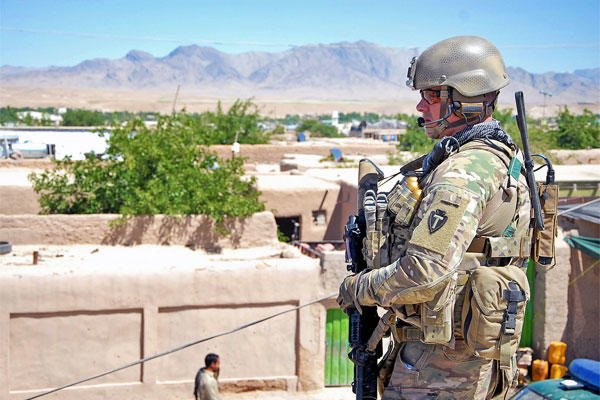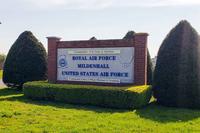U.S. and Afghan National Army troops are bracing for a spike in enemy attacks over the next two months as the Taliban seeks to make inroads before the end of the current "fighting season," the U.S. commander in southeastern Afghanistan said Wednesday.
"We expect a spike in violence with about 60 days left in the fighting season," said Army Maj. Gen. James C. McConville, head of Regional Command-East and also commander of the 101st Airborne Division.
"I think we're at a very critical time," McConville said in a video briefing to the Pentagon from the Bargram Air Base in Afghanistan.
"This is the first time that the Afghan security forces have been in the lead during the entire fighting season," McConville said. "And they believe they're winning, and I tend to agree with them. Through the first part of the fighting season, the Afghans have done well."
McConville spoke three days after three U. S. Army soldiers were killed by an indirect fire attack, possibly from mortars, at their outpost in Paktia province.
Staff Sgt. Octavio Herrera, 26, of Caldwell, Idaho, and Spec. Keith E. Grace, Jr., 26, of Baytown, Tex., were killed in the initial attack. Sgt Jamar A. Hicks, 22, of Little Rock, Ark., died after being evacuated to Forward Operating Base Salerno in Khost province, the Defense Department said.
In his briefing, McConville said the Afghan National Security Forces have shown marked improvement since his last tour with the 101st Airborne in Afghanistan in 2008-2009.
"They're going into places where historically they haven't, and they've been able to clear and hold," McConville said.
The major shortcoming for the ANSF was in close air support from the fledgling Afghan Air Force, McConville said, although the Afghans were progressing in transporting troops and evacuating casualties with their Russian-made Mi-17 and Mi-35 helicopters.
To compensate for the lack of close air support, the Afghans have been relying on their Russian-made D-30 122 mm howitzers and 82mm and 60mm mortars for indirect fire in situations where U.S. troops would be likely to call on fixed-wing aircraft or attack helicopters to hit enemy positions, McConville said.
McConville said his concern about a spike in violence stemmed from the success of the ANSF in the current fighting season, and the need for the Taliban to hit back to achieve a propaganda victory.
"They're going to have to do something -- get into Kabul, maybe blow up some things," McConville said. "We've anticipated that."
His other major concern, McConville said, was the lack of progress in achieving a Bilateral Security Agreement with the Kabul government to allow for a continued presence of the coalition after 2014, when all U.S. and NATO combat forces will be withdrawn.
President Hamid Karzai broke off negotiations on a post-2014 coalition presence last month after claiming he was shut out of plans to open peace talks with the Taliban in Doha, Qatar.
In Kabul Tuesday, a senior International Security Assistance Force commander said that an agreement on an enduring coalition presence was vital to maintaining the effectiveness of the Afghan forces.
"The Afghan security forces' full complement of 352,000 has almost been achieved. We now need to concentrate on quality because what we have today is not yet fully sustainable," said British Lt. Gen. John Lorimer, the deputy ISAF commander.
"We need to assist the Afghan Ministry of Defense and Ministry of Interior in adapting, restructuring and developing capacity," Lorimer said at a news briefing. "Currently neither of those institutions has the necessary end-to-end processes to generate enduring capability."
Under President Obama's plan, the current U.S. troop strength of about 64,000 in Afghanistan will come down to about 34,000 by the end of this year.
In his southeastern sector, McConville said he currently had about 12,000 troops, down from 18,000 last year. The U.S. previously maintained 58 bases in Regional Command-East and that now there are 17 bases and 11 'Assisted Platforms' -- bases controlled by the Afghans where the U.S. keeps a small position on the base.
























